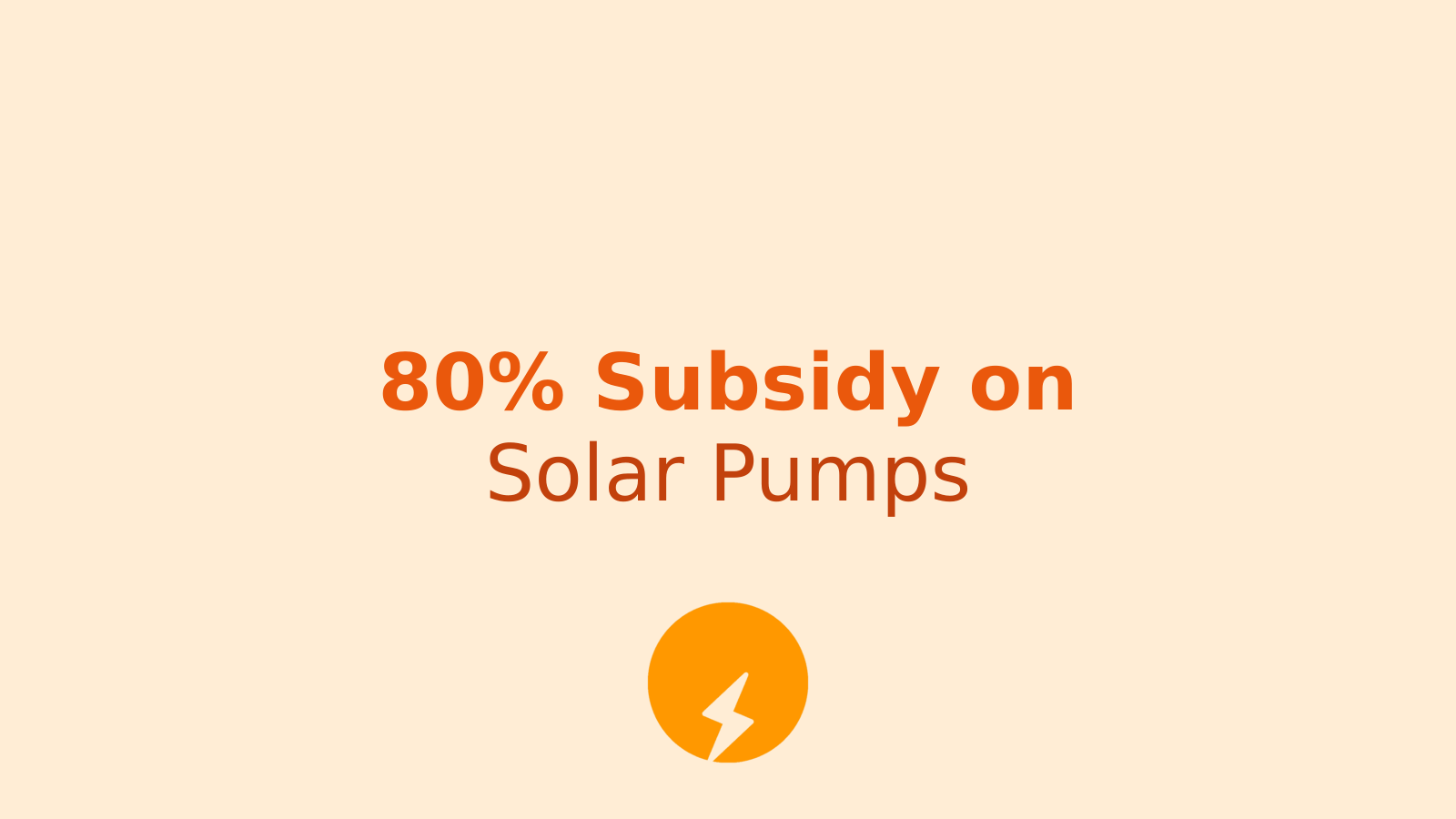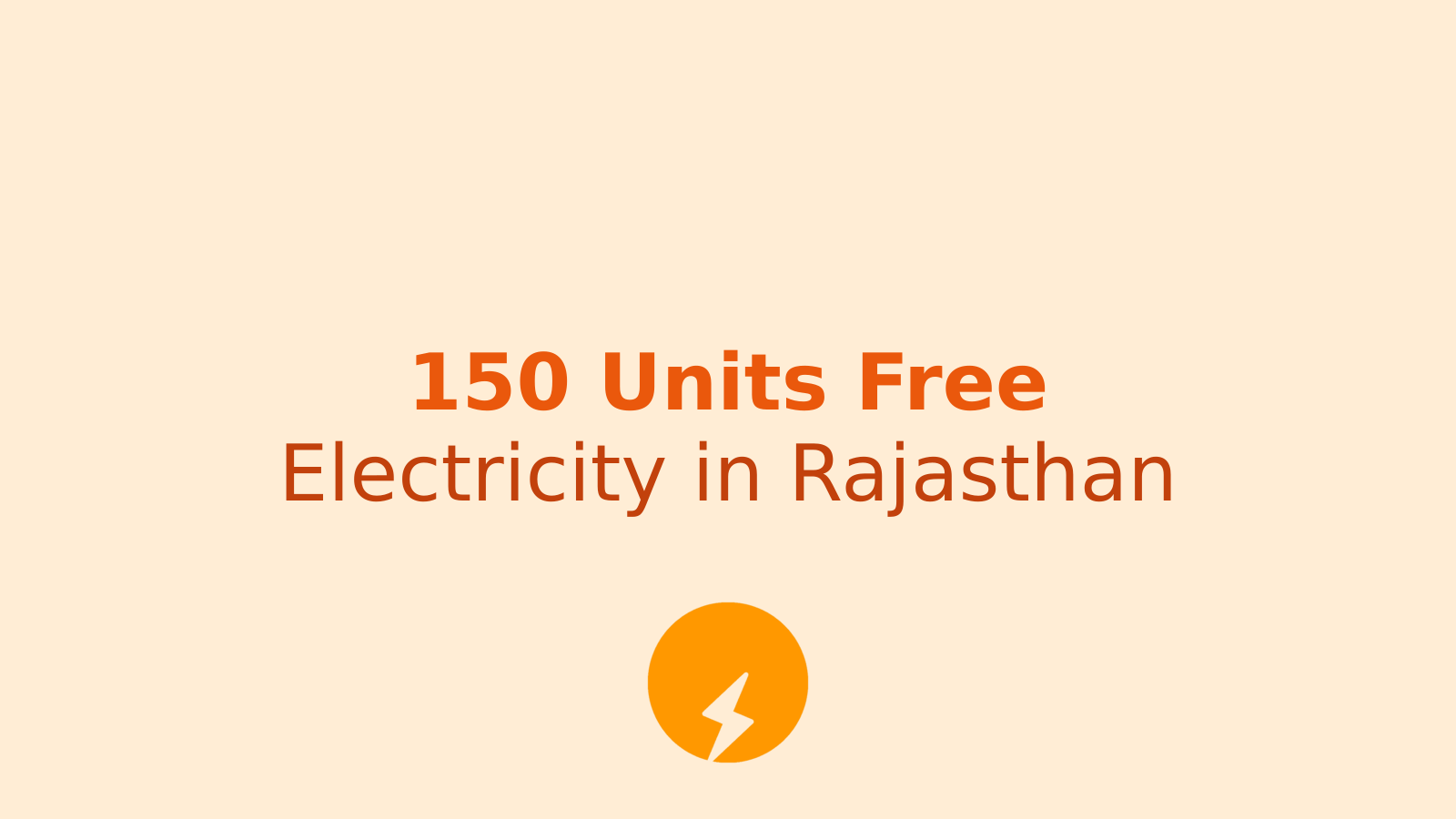Farmers across India spend a significant amount on electricity and diesel for irrigation. These costs add up quickly and put pressure on already tight budgets. The government has launched the Solar Pump Subsidy Yojana to help farmers reduce these expenses and switch to clean energy.
Solar pumps run entirely on sunlight. They need no fuel, produce no pollution, and work reliably for years. This scheme makes solar pumps affordable by offering subsidies of up to 90% in some states. Let me walk you through what this scheme offers and how you can apply.
What is the Solar Pump Subsidy Yojana
The Solar Pump Subsidy Yojana is part of the PM-KUSUM (Pradhan Mantri Kisan Urja Suraksha evam Utthaan Mahabhiyan) programme. The central government started this initiative to help farmers move away from traditional power sources and adopt solar energy for irrigation.
The scheme covers solar pumps of different capacities: 3 HP, 5 HP, and 7.5 HP. Both central and state governments contribute to the subsidy. Together, they cover around 60% of the total cost. Farmers from scheduled castes and tribes receive additional support.
You only need to pay between 10% and 40% of the pump cost, depending on your category and state. The remaining amount comes from government subsidies and sometimes bank loans at low interest rates.
Key Benefits of the Scheme
This programme offers multiple advantages that make farming easier and more profitable.
First, you get free energy for irrigation. Once installed, the solar pump runs on sunlight at no ongoing cost. You save on electricity bills and diesel purchases. Power cuts become irrelevant because your pump works as long as the sun shines.
Second, solar pumps last 20 to 25 years with minimal maintenance. You make a one-time investment and enjoy decades of reliable service. The panels are sturdy and designed to withstand harsh weather conditions.
Third, the scheme helps the environment. Solar energy produces no emissions or pollution. By choosing solar, you contribute to cleaner air and a healthier planet.
Fourth, you can earn extra income. If your solar pump generates more electricity than you need, you can sell the surplus to the local power distribution company (DISCOM). This creates an additional revenue stream beyond your regular farming income.
Who Can Apply
The scheme is open to all farmers who own agricultural land. You must have clear ownership documents for your land. The plot should be suitable for installing a solar pump, with adequate sunlight exposure throughout the year.
Both individual farmers and farmer groups can apply. Some states also allow cooperative societies and farmer producer organizations to participate. Priority goes to areas with poor grid connectivity or frequent power cuts.
Documents You Need
Keep these documents ready before starting your application:
- Aadhaar card for identity verification
- Land ownership papers (khatauni or land records)
- Bank account details with cancelled cheque
- Recent passport size photographs
- Residential address proof
- Caste certificate (if applying under reserved category)
- Mobile number linked to Aadhaar
Make sure all documents are clear and up to date. Any mismatch in names or details can delay your application.
How to Apply Online
The application process is straightforward. You can complete it from home if you have internet access. Here are the steps:
Visit the official PM-KUSUM portal or your state agriculture department website. Look for the solar pump subsidy section. Click on the new registration link.
Fill in your personal details accurately. Enter your name, father's name, address, and contact information. Provide your Aadhaar number for verification.
Enter details about your land. Mention the plot number, area, and location. Upload scanned copies of your land documents.
Select the pump capacity you need based on your land size and water requirements. The portal will show you the total cost and subsidy amount.
Upload all required documents in the specified format. Most portals accept PDF or JPEG files up to a certain size limit.
Pay the initial contribution through the online payment gateway. You can use net banking, debit card, or UPI. Keep the payment receipt safe.
Submit your application and note down the reference number. You will receive an SMS confirmation on your registered mobile number.
What Happens After Application
Once you submit your application, the district agriculture office reviews it. They verify your documents and check eligibility. This usually takes 7 to 10 working days.
If your application is approved, a technical team visits your farm. They assess the site, check water availability, and determine the best location for the pump. They also measure sunlight exposure to ensure optimal performance.
After site approval, the department assigns an empanelled vendor to install your pump. The vendor handles all technical aspects, including panel mounting, pump installation, and system testing.
Installation typically takes 2 to 4 weeks from approval. Once complete, the vendor demonstrates how to operate and maintain the pump. You receive a user manual and warranty documents.
The department inspects the installation before releasing the subsidy amount. After final approval, the subsidy goes directly to the vendor. You have already paid your share during application.
Tips for Successful Application
Double-check all information before submitting. Small errors in Aadhaar number or bank details can cause rejection.
Apply early in the financial year. Funds are limited and allocated on a first-come-first-served basis in many states.
Contact your local agriculture office if you need help with the online form. Many districts have facilitation centers where staff can guide you.
Keep both soft and hard copies of all documents. You might need them during site inspection or for future reference.
Maintain your land records properly. Any dispute over land ownership will disqualify your application.
Common Questions
Can I apply if I already have an electric pump? Yes, you can install a solar pump even if you have an existing electric or diesel pump. Many farmers keep both as backup.
Do I need three-phase electricity connection? No, solar pumps work independently of the electricity grid. This makes them perfect for remote areas.
What if there is no sunlight for several days? Most solar pump systems include battery backup for cloudy days. You can also opt for hybrid systems that switch to grid power when needed.
Can I relocate the pump later? Yes, solar pumps are portable. However, you should inform the agriculture department before moving it to avoid issues with subsidy terms.
State-Specific Variations
Different states offer different subsidy rates. Some states provide up to 90% subsidy for small and marginal farmers. Others might offer 70% to 80% depending on budget allocation.
Check your state agriculture department website for exact subsidy percentages and eligibility criteria. The application portal link also varies by state.
Some states conduct the scheme in phases, opening applications at specific times during the year. Stay updated through official announcements or local agriculture offices.
Making the Most of Your Solar Pump
Once installed, proper maintenance ensures long life and efficient operation. Clean the solar panels every few weeks to remove dust and debris. Dirty panels produce less power.
Check electrical connections periodically. Loose wires can reduce efficiency or cause system failures. If you notice any issues, contact the vendor immediately.
Use the pump during peak sunlight hours for best performance. Early morning and late afternoon give lower output due to slant sunlight.
Consider installing drip irrigation along with your solar pump. This combination maximizes water efficiency and crop yield while keeping costs low.
The Solar Pump Subsidy Yojana represents a practical solution for irrigation challenges. It reduces costs, increases reliability, and supports sustainable farming. With applications now open, this is the right time to take advantage of this scheme and modernize your irrigation system.
Read more articles in News & Updates Category or in Oct 2025 Month




